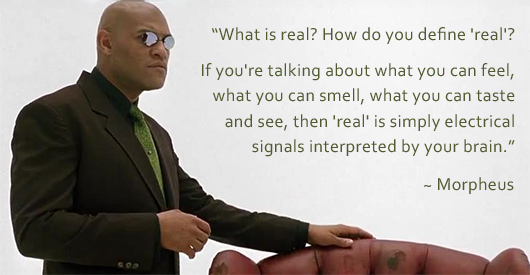The value of basic research

Following on from my visit to Freedom Park, one event specifically left me in a state of indecisiveness. My inability to answer the question I was asked about the contribution my study has to South Africa based on what I had witnessed during our tour of the Park’s exhibition. This made me reflect on the value of my study and the dichotomy and moral obligations that basic and applied research presented.
I decided to investigate the debate that seemed to be raging by two parties of researchers who advocated basic and applied research methodologies respectively and seemed to suggest that the twain would not meet. There is a strong economic element in knowledge creation in Universities in considering the two types of research in terms of funding. As Geuna, (2001) points out, there is a tension between basic research which reflects researcher-directed advancement and targeted research which addresses societal needs with an increase of pressure on universities to produce “Nationally relevant research” (Geuna, 2001, p. 609) In order to understand this tension, the first step was to define what is understood by basic and applied research.
Etzkowitz and Leydesdorff (2000) suggested that the distinction between basic and applied research first became evident in the 19th century. Since then applied research is understood as research that is pragmatic and has a purpose (Davis, 2014, pp. 74–75). “The goal is to predict a specific behaviour in a very specific setting” (Stanovich, 2007, p. 106 cited by Nyeko, 2014, p.27) and might address a particular problem.
Basic research is also sometimes called curiosity-driven research (Geuna, 2001) or pure research (Davis, 2014, p. 73) and has been described as an attempt to elaborate on fundamental understanding (Nyeko, 2016, p. 27). It focuses on the testing of theories (Hale, 2011) and generating knowledge which may not always have an immediate practical value but can be used in future research to facilitate practical applications. Cherry (2018) argues that the main difference between basic and applied research is time and that the applicability of basic research is not always immediately evident.
With these definitions in mind, the research I am undertaking falls squarely in the basic research category. To add to the conundrum, my research spans several subjects including neuroscience, cognitive psychology, neuroeconomics and specifically, decision-making. I could argue that I am viewing the mind from the inside rather than traditional psychology viewing behaviour and extrapolating that behaviour to an internal cause (Arbib, 2018, p. 116)
REFERENCES
Arbib, M. A. (2018). From cybernetics to brain theory , and more : A memoir. Cognitive Systems Research, 50, 83–145. https://doi.org/10.1016/j.cogsys.2018.04.001
Cherry, K. (2018). Basic research in psychology. Retrieved June 17, 2018, from https://www.verywellmind.com/what-is-basic-research-2794876?print
Davis, C. (2014). The aims of Research. In F. du Plooy-Cilliers, C. Davis, & R.-M. Bezuidenhout (Eds.), Research Matters (1st ed., pp. 72–81). Cape Town: Juta & Company Ltd.
Etzkowitz, H., & Leydesdorff, L. (2000). The dynamics of innovation: from National Systems and “Mode 2” to a Triple Helix of university–industry–government relations. Research Policy, 29(2), 109–123. https://doi.org/10.1016/S0048-7333(99)00055-4
Geuna, A. (2001). The changing rationale for European university research funding: Are there negative unintended consequences? Journal of Economic Issues, XXXV(3), 607–632.
Hale, J. (2011). Understanding Research Methodology 5: Applied and Basic Research. Retrieved June 17, 2018, from https://psychcentral.com/blog/understanding-research-methodology-5-applied-and-basic-research
Nyeko, K. E. (2016). Entrepreneurial pursuit in academic-industry collaboration: an exploratory study of factors influencing financial success in private universities in Malaysia. Swinburne University of Technology.
Stanovich, K. (2007). How to Think Straight about Psychology (8th ed.). Boston, MA.: Allyn & Bacon.
Arbib, M. A. (2018). From cybernetics to brain theory , and more : A memoir. Cognitive Systems Research, 50, 83–145. https://doi.org/10.1016/j.cogsys.2018.04.001
Cherry, K. (2018). Basic research in psychology. Retrieved June 17, 2018, from https://www.verywellmind.com/what-is-basic-research-2794876?print
Davis, C. (2014). The aims of Research. In F. du Plooy-Cilliers, C. Davis, & R.-M. Bezuidenhout (Eds.), Research Matters (1st ed., pp. 72–81). Cape Town: Juta & Company Ltd.
Etzkowitz, H., & Leydesdorff, L. (2000). The dynamics of innovation: from National Systems and “Mode 2” to a Triple Helix of university–industry–government relations. Research Policy, 29(2), 109–123. https://doi.org/10.1016/S0048-7333(99)00055-4
Geuna, A. (2001). The changing rationale for European university research funding: Are there negative unintended consequences? Journal of Economic Issues, XXXV(3), 607–632.
Hale, J. (2011). Understanding Research Methodology 5: Applied and Basic Research. Retrieved June 17, 2018, from https://psychcentral.com/blog/understanding-research-methodology-5-applied-and-basic-research
Nyeko, K. E. (2016). Entrepreneurial pursuit in academic-industry collaboration: an exploratory study of factors influencing financial success in private universities in Malaysia. Swinburne University of Technology.
Stanovich, K. (2007). How to Think Straight about Psychology (8th ed.). Boston, MA.: Allyn & Bacon.